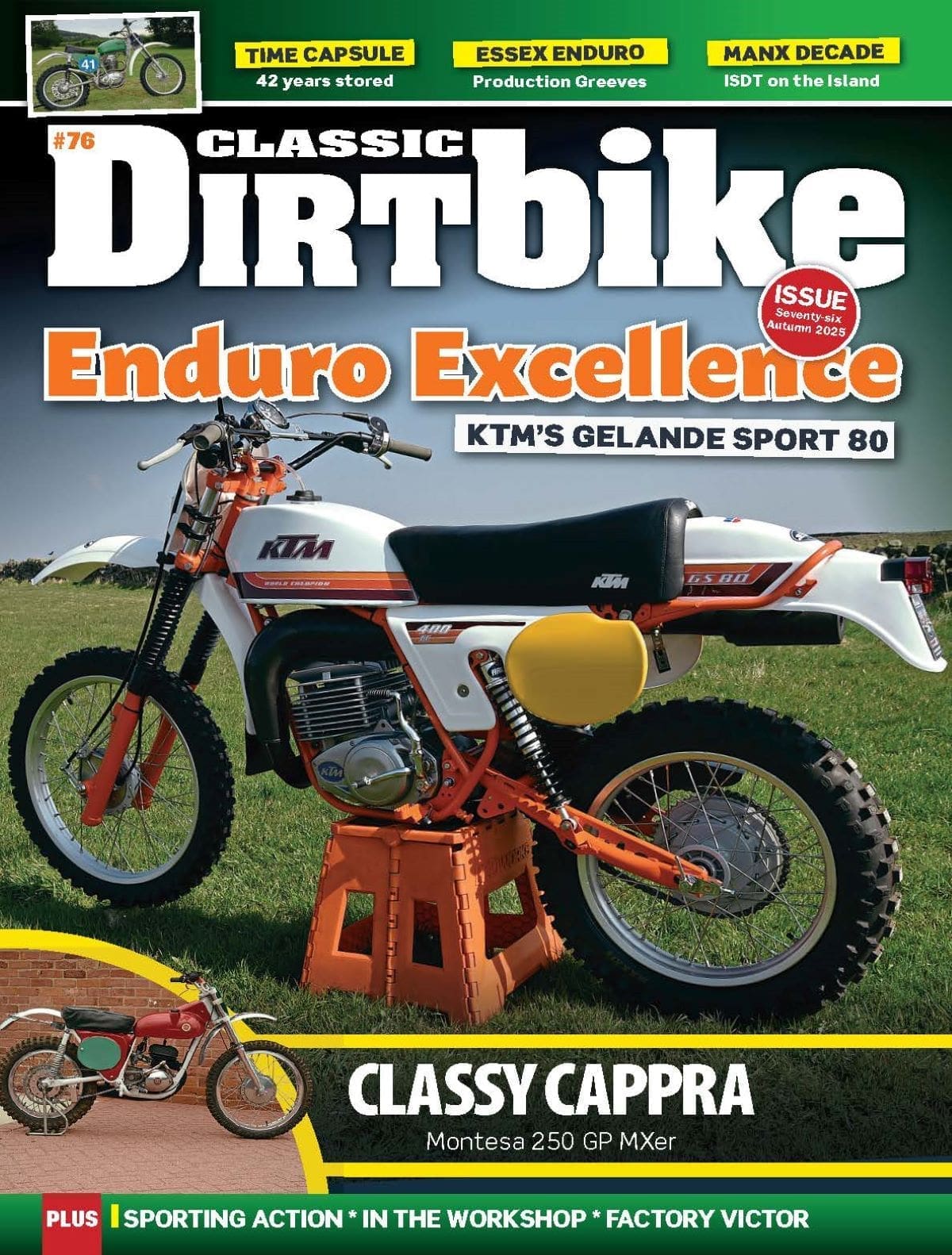Arguably almost every winner of the SSDT has been ‘foreign’ but Yrjo Vesterinen became the first non-Brit to win the trial and opened the floodgates.
Words: Tim Britton Media Ltd Pics: Nick Nicholls collection, Mortons Archive

One of the biggest problems facing magazine editors isn’t what to use but rather what not to use. Take this feature for instance; it is of the 1980 Scottish Six Days Trial and due to industrial action in the print world shutting The MotorCycle down for six weeks these stunning images from Nick Nicholls never made it to the pages of the paper. By the time the dispute was over the Scottish was five weeks into the past so only got ‘…1980 SSDT winner Vesty…’ and the results. This didn’t seem right to us at CDB and we wondered if anyone riding in the SSDT of 43 years ago could remember anything about it, so the word went out…
Enjoy more Classic Dirt Bike Magazine reading.
Click here to subscribe & save.
Recollections ranged from fairly accurate and reasonably detailed to “yer ’avin’ a larf ain’t cha… can’t remember 43 minutes ago…” So, working my way through the pics took ages… hey I’m a trials rider and I love the Scottish… but I managed to whittle down the selection to the ones here…
If you want to see more or perhaps you were one of the 280 riders who started the trial and have often wondered if there was a pic of you being a superstar on the second sub at Beinn Nam Beatrach on Day Four for instance, then contact Jane Skayman, our archivist.


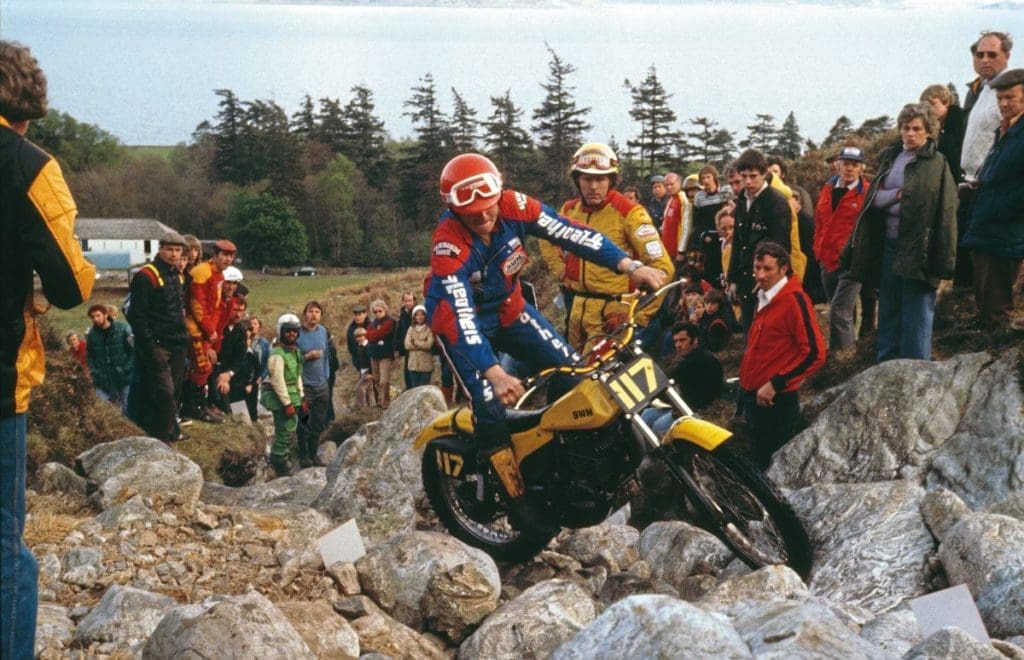
To be self-indulgent for a moment I’m going to include my own personal recollections of the SSDT 1980 and they are little to do with the trial as I wasn’t there. I was actually 265 miles further south for a large part of the week as for 1980 – and the few years before too – the SSDT coincided with my exams for my trade and this was my final year. So I spent the week in a classroom in Durham Tech while eagerly waiting for any news at all but with the press on strike there was nothing to read… So, I missed the momentous occasion of the First Foreign Win. Speaking about the trial to John Dickinson he too wasn’t in Fort William for 1980, it was his first year at TMX and he reckoned to be in the Subs Dungeon at Morecambe…
Our touch of humour at the start of this feature about almost every winner of the Scottish being ‘foreign’ of course refers to Scotland being a country and Bob Macgregor being the only native Scot to win the trial; until 1980 all the rest were English. Such humour apart, the fact is in 1980 Yrjo Vesterinen became the first official, non-British winner of the SSDT so it is only right we asked him for his recollections of the week. “The Scottish was perhaps not my favourite trial and it was a tough week which needed full concentration. On top of this I was learning about the Montesa too and we’d had some problems with it on the lead up to the trial. The bike never felt as though it was working properly and it came to a head when the crank pin snapped and wrecked the engine. It turned out the crank cases were not a matched pair and the crankshaft was constantly out of line. Once this was corrected the bike was much better. I have to mention Bill Brandwood at Montesa’s UK importer Sandifords who was for Montesa what Reg May was for Bultaco. When I arrived in at Sandifords the bike was already waiting and fully prepared. Thanks to his attention the Montesa worked well all week and only required basic servicing and a couple of tyres during the trial.”
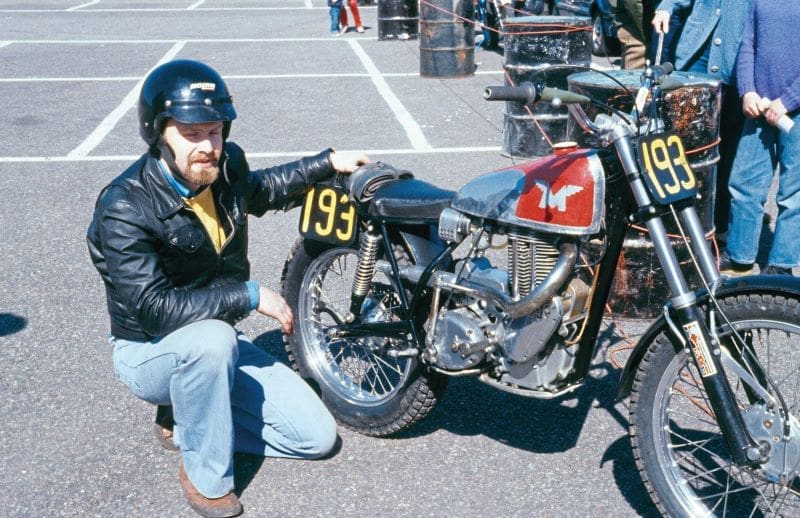

Vesty added: “When I arrived in Fort William I was approached by Michelin in the parc ferme, they had come up with the first generation of new sticky tyres and offered me some for the week. They did make a huge difference and I’m pleased I took their offer.” Reflecting on the bike, he admitted the Montesa was well suited to Scotland as it was a long motorcycle so held a straight line easier: “The gearing too was very relaxed, almost perfect in fact.” As he spoke about the trial Vesty reckoned the deciding section in 1980 was Cameron Hill on the last day. “It is the same bit which is used in the Pre65 now and I remember cleaning it but Malcolm Rathmell had a ‘three’ and I felt the ‘win’ was now certain unless something went really wrong,” he grinned wryly. The last group on Saturday consisted of 10 sections on the lower slopes of Ben Nevis, then there were the few miles into Fort William and the crowd pleaser section at Town Hall Brae in the centre of town. “I came out of the last section on Ben Nevis and raced off down the track to the road, well, I was so elated at knowing I had won I lost concentration and the front end of the Montesa caught on a rock and I went over the handlebars at quite a speed.” Thankfully Vesty landed with little more than hurt pride, the Montesa wasn’t damaged and he made his way to Fort William, cleaned Town Hall Brae and rode the last few yards into the finish and the history books.
It would be fair to say Malcolm Rathmell would have started the event as favourite as he’d won his second Scottish the year before. Like Vesty, Rathmell was Montesa mounted and the Yorkshireman’s temperament suited the SSDT. Sadly for Rathmell it was not to be and he finished the week six marks adrift from Vesty. Honda rider Rob Shepherd had initially posted decent rides in the early part of the week and by Tuesday evening was in second place behind Bernie Schreiber who at this point in the trial looked like he would be a cert for the ‘first foreign winner’ title. Rob took the lead on the fourth day as Bernie had a disastrous, for him, ride which added over 50 marks to his score and dropped him to 7th place. Schreiber would indeed win the trial, but not until 1982.
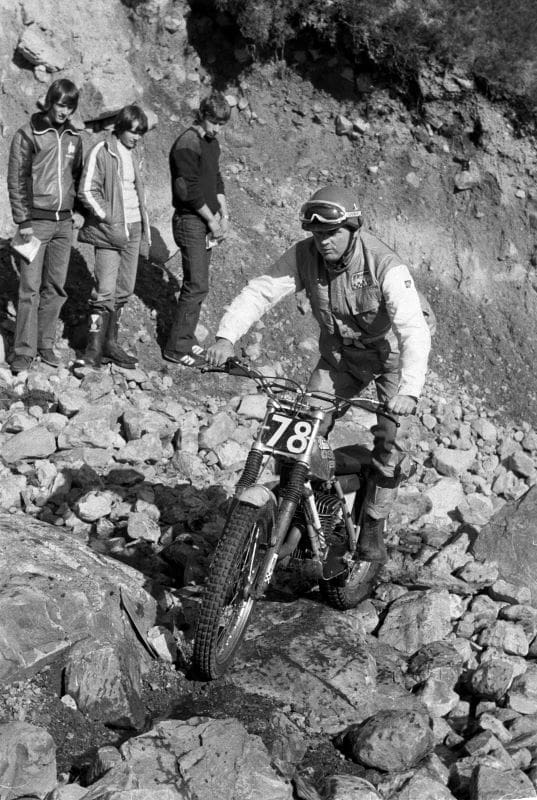
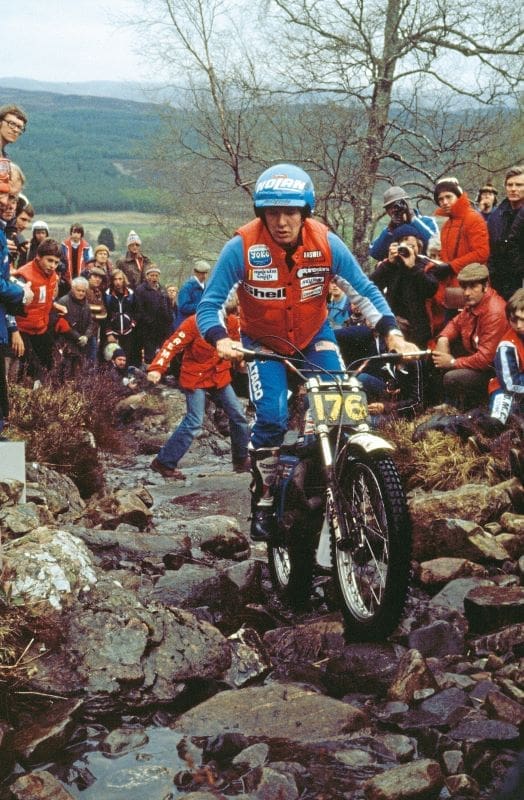
Bernie said: “It was a difficult week as I was the current world champion but I didn’t have a works bike to ride, Bultaco were on their way out and the factory was hit by strikes. I’d decided to stick with the bike I knew best but others in the team took offers of different machines. This seemed to work for Vesty,” laughed the Californian.
Also works bike-less was five-time SSDT winner Mick Andrews. The Derbyshire ace had been informed by Yamaha they were dropping the whole trials team but wanted to keep him on – but low key. “I was allowed to ride whatever I wanted by Yamaha but felt the Yamaha connection was important so struck a deal between John Shirt and Yamaha to use one of his Majesty machines while Yamaha would sanction the use of my former works engines plus a few other bits and pieces. This meant I was still Yamaha mounted and was familiar with the bike.” Mick would finish the week a few marks behind Honda’s Rob Shepherd and tally 111 marks lost.
With the benefit of hindsight and the results sheet it is a fair comment to say the 1980 trial was a pivotal point in not just the Scottish but trials in general. With Vesty’s win it marked the end of the old guard and the end to traditional no-stop, I was going to say for a year or two but even though no-stop is back in these days it seems to be a different kind of ‘no-stop’ to when I started riding… Okay, gripe over, the riders from the Seventies who had been doing the winning were still there but in the world series there was a new style of riding. The younger riders were in the ascendency so they wanted to use these techniques in Scotland and in 1981 Gilles Burgat would use such riding skills to win the trial.

Another reason for the 1980 SSDT to be a pivotal point is not only were the old guard riders at the end of their dominance but the Spanish industry too was coming to an end. Thanks to employment laws preventing employers from adjusting their work-force – hiring and firing in plain English – Spain’s industry found it had to carry on with the boom-time employment in a world where it couldn’t sell as many motorcycles. OSSA was still around but its days of SSDT wins with Mick Andrews were in the past. At 17th place Norman Shepherd was highest placed finisher on OSSA’s Gripper model but not too far behind him was fellow Yorkshireman Tony Calvert. When Bill Wilkinson won the 1969 SSDT on a Greeves he was pretty much the last gasp of the British industry in the trial and he would soon transfer to OSSA as part of the three-man UK team; he was still faithful to the marque in 1980.
Bultaco too was still present in the trial and though a number of its top riders were entered on them and listed as such in the results, riders like Martin Lampkin and Lane Leavitt for instance had taken offers from elsewhere. Sadly Martin is no longer with us but the three-time SSDT winner and first world champion was in the 1980 event on an SWM. Former Bultaco team rider and multi French champion Charles Coutard had gone SWM some time before the trial and he was to put a good performance up on his 280 factory machine. For a number of other former Bultaco riders though Montesa stepped up to the mark and supplied machines and American team man Lane Leavitt was one who enjoyed the firm’s support.
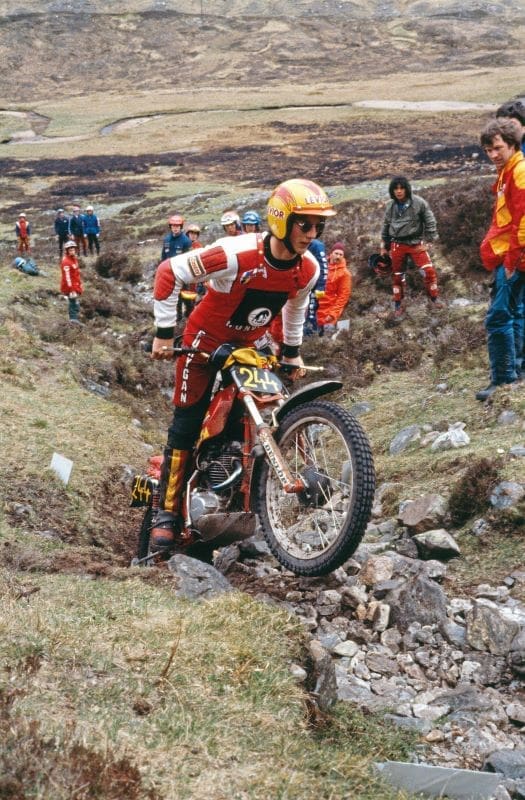
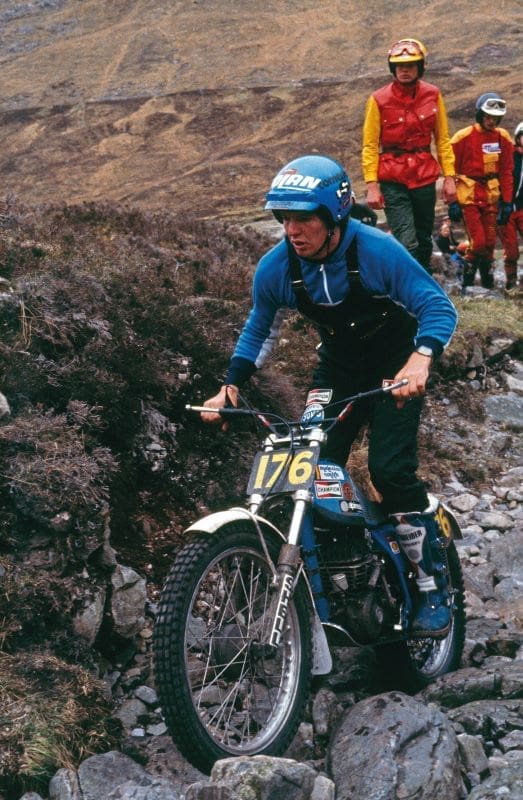
Making his first appearance in the Scottish was Honda rider Eddie Lejeune. He was to make his mark on the world trials stage too but for his first SSDT he secured the Best Newcomer trophy. The Belgian rider would have several goes at the SSDT and was always in the top five when he rode but never quite got the premier.
There are many tales from all levels of rider and just because clubmen like me aren’t at the sharp end of the results doesn’t mean our week in the Highlands was any less dramatic or memorable.
It is just a shame from a magazine point of view there is only room for so few photographs in this feature as we could indeed fill this and many more copies of the magazine with images from the world’s greatest trial. Does anyone else have any memories of this previously unreported event?
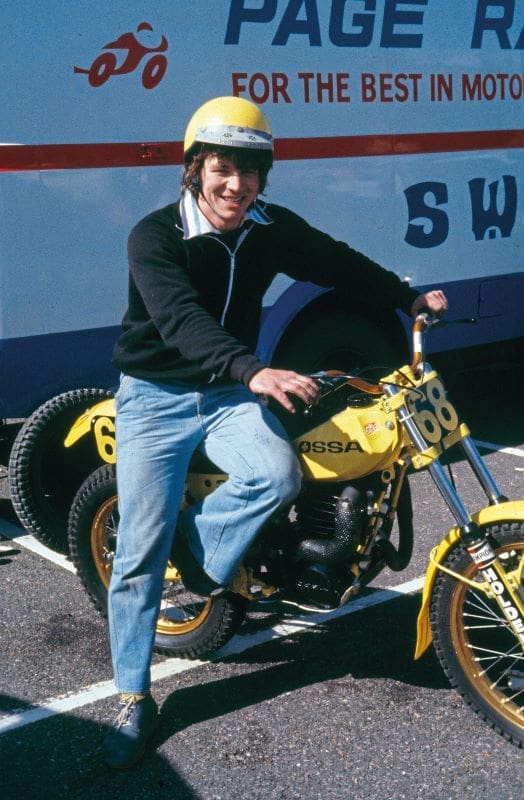
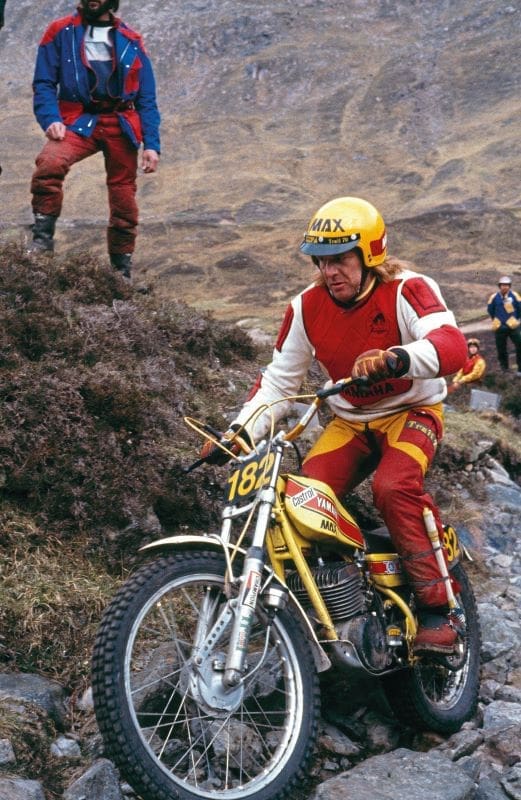
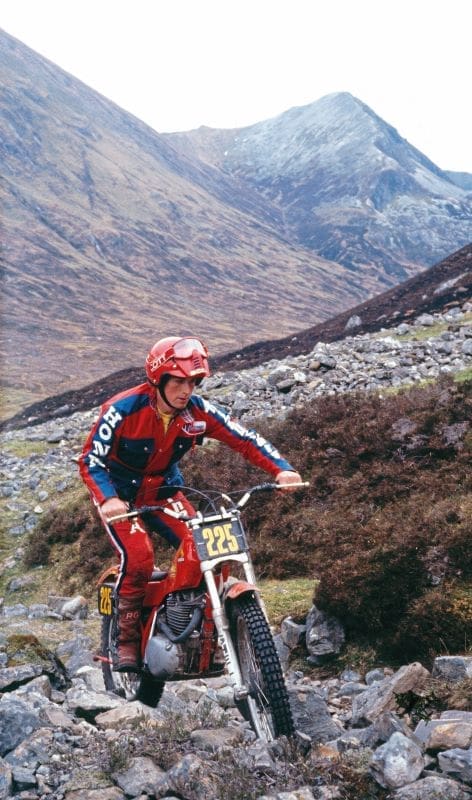
Lane Leavitt – Hollywood action performer
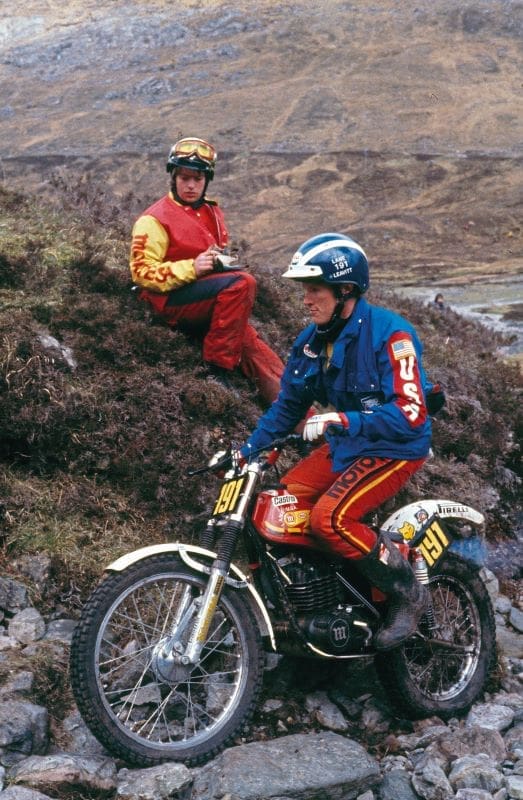
Lane Leavitt and his wife Debbie run a company dedicated to providing the stunt action used in many major Hollywood movies, mostly vehicular, but Lane also has the reputation for some spectacular ‘fire’ stunts too. However it is their trials riding which we’re interested in here. Debbie rode the 1978 SSDT on a 175 Yamaha and is noted for balancing the 175 Yamaha while standing on her head on the saddle… For 1980 Debbie was entered but didn’t ride as by the time of the Scottish she was seven months pregnant but she was there as back-up for Lane.
Lane had really wanted to ride a Bultaco in Scotland as he’d been working with Section One Trials products in the USA and developing some seriously trick components as well as developing FoxShox trials rear dampers and was hoping to campaign a works Bulto with these parts on. He said: “It was a strange time as there were no factory Bultacos available but Montesa USA came forward with a bike for me to ride there and Jim Sandiford provided a bike for Scotland. In the USA I did a quick R&D job on the bike to make it handle more like the Bultaco.
“Looking back this perhaps wasn’t the smartest move as some of the changes needed more development time than I had. For instance the FoxShox were moved up the swinging arm by four inches and seemed fine until day two when the springs began lose their pre-load, this made the bike squat down at the rear and altered the steering. When they were correct they were brilliant and at the top of Laggan Locks on the Caledonian Canal one of the Fantic representatives came rushing over shouting ‘they work, they really work’ as he’d watched the rear of my bike soak up all the bumps and rocks.
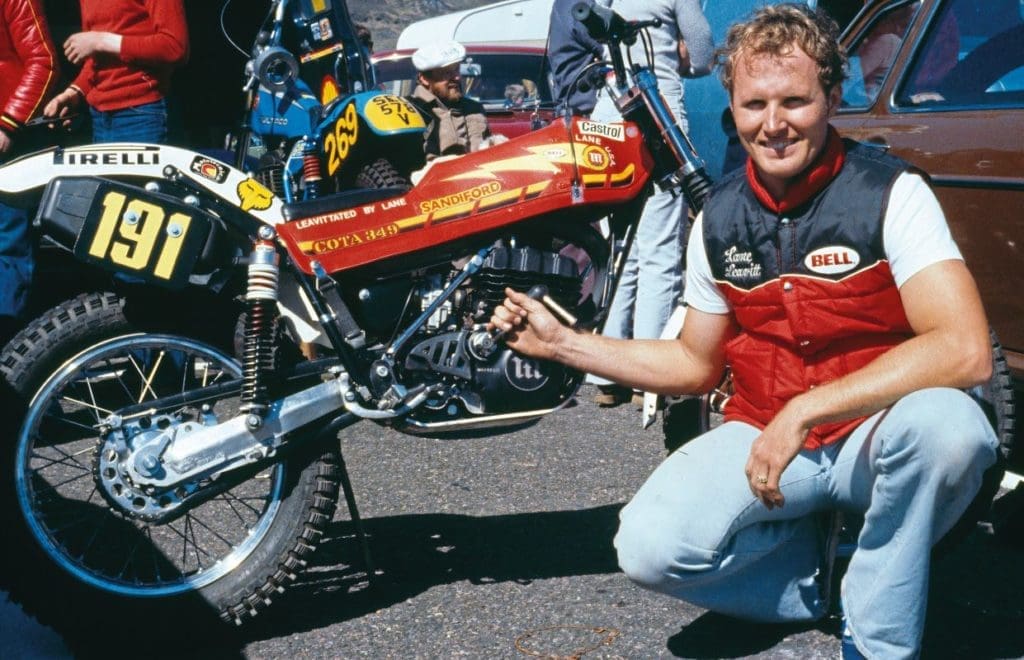
“A memory of the week was when hurtling along a road to a group of sections a pair of RAF fighters flew over at about 100ft, frightened the life out of me and Debbie, behind in the car, reckoned she thought the world had come to an end. Finally, Debbie and I never made it to the presentation on the Saturday evening so I never got to pick up my Special First Class award, I still have a space for it on the mantelpiece, wonder if the Edinburgh DMC still have it?”
Over to you, Edinburgh and DMC…
Habla usted Ingles? – Do you speak English?
Talking to my fellow club member Stephen ‘Butch’ Robson about the trial to see if he had any recollections brought forward this gem of information. Butch was a talented rider in the North East Centre and I think at this period he was centre champion. UK Montesa importer Jim Sandiford had the idea of having every centre champ in the UK mounted on Montesa and Butch was supported through our local dealer Quinn’s Motorcycles. Butch said: “For some reason I didn’t make the cut for an entry in 1980 and looked like being a spectator until Peter Quinn got on to Sandiford and the upshot was Montesa Spain got me an entry as an official team member. My name wasn’t listed on the paperwork so I was just down as ‘Montesa, Spain’ and when presenting myself at the ‘signing on’ caravan during the weigh-in, one official very carefully and slowly asked: ‘Do you speak English?’ Before I could answer, some wag behind me called out: ‘No, he doesn’t, he’s from Newcastle…’ Butch would finish the week in 31st position.
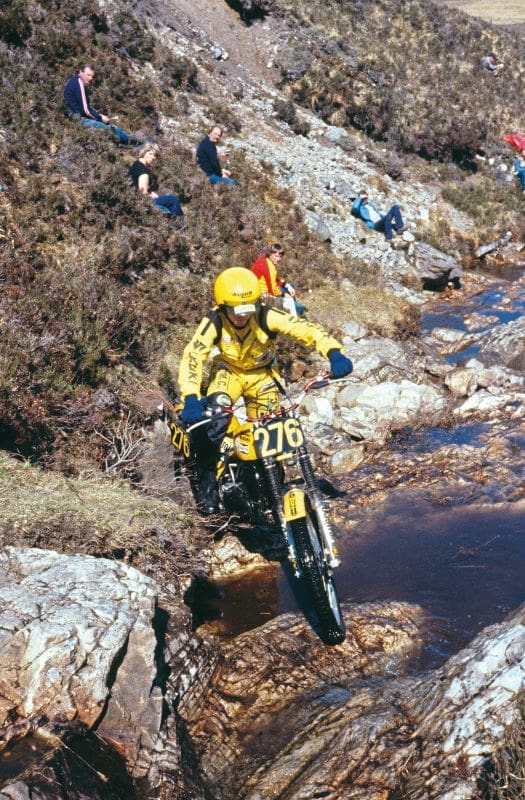
John Reynolds
On being asked for recollections of the 1980 event John Reynolds exclaimed: “Hah! Forty-three years ago, now you’re asking.” He thought for a minute: “I was on a 325 Suzuki and in those days Suzuki’s trials team was low-key. I do remember wearing out my factory bike in the 1979 SSDT so, for 1980, I decided to fettle my practice bike and ride it. As new ‘factory’ engines were scarce I whacked a new piston and rings in the old one and didn’t give it enough time to settle in as it nipped up three times on Monday.” It must have settled down though as John finished the week 10th.
Charles Coutard
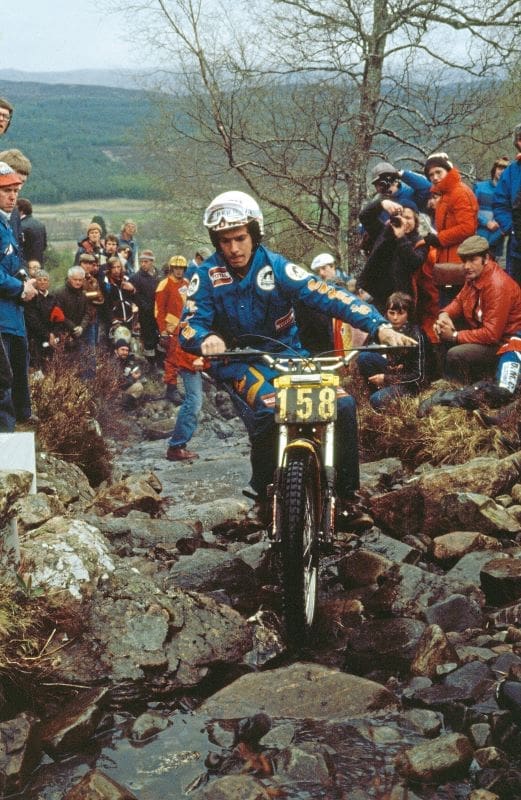
Charles recalled: “The year 1980 was for me a very good year on the family level with the arrival of my daughter Mélody but on the sporting level a big disappointment!
“After a hard year in 1978 to develop the new SWM, I experienced a good year in 1979 and I thought logically 1980 would be even better!
“After an encouraging start to the season everything went from bad to worse until I decided to end my SWM contract in the middle of the year. The factory, the team and the bike were all very good and yet I felt bad and lost confidence in myself and in the bike! I decided at the end of July to change for Montesa in order to find a new challenge.
“Now I often ride with my SWM and I can realise that it was not at all the fault of the bike but just a lack of confidence as well as a weariness in the development.” Charles finished 18th in the SSDT in 1980.
Results
JR Alexander Trophy: Yrjo Vesterinen
Lochaber Challenge Trophy: Malcolm Rathmell
Nelson Challenge Trophy: Rob Shepherd
Albert Memorial Trophy: Eddie Lejeune
Ben Nevis Challenge Trophy: Fred Michaud
Allan Hay Memorial Trophy: KG Johnston
Jimmy McGregor Trophy: W McMaster
Gordon Nimmo Trophy: RM Leitch
George Simpson Trophy: Mick Andrews
RA Castle Trophy: R Kirkland
Edinburgh Trophy: Yrjo Vesterinen
Davie Hogg Trophy: A Ritchie
Eigg Cup: Not Awarded
Jack Williams Trophy: J Jefferies


